Stealing Social Media Ideas From The Private Sector
Simple strategies to get results for schools on social media

Social media has changed the way people consume information. People choose products partially based off of the company’s reputation online, making social platforms valuable tools in sales and marketing. The platforms provide companies the ability to connect with their audience in ways that were impossible twenty years ago; the fact that marketers have tracked their audiences onto the platforms is no surprise. As a result, many small companies have grown exponentially in the past decade by figuring out the mechanics of social media marketing online.
Let’s take a look at what best practices schools can steal from these companies that will drive results in your school’s social media strategy.
Click on any section to jump right to it!
- Tell small stories that support your larger story
- Repeat yourself again and again
- Spotlight staff
- Redirect to a private channel
- Respond quickly, with empathy
- Know when to hide, block, or report
1. Tell small stories that support your larger story
Airbnb is rethinking travel. The company has grown at a breakneck pace, bringing its value to over $60 billion today. One of their strongest social media marketing strategies is to share many small stories that build up a larger narrative about adventure and excitement.
Instead of posting about value, security, and special offers, they post about people trying things for the first time, forging friendships, and witnessing incredible views. When their audience continuously sees these stories, it strengthens their overall narrative of their brand: Airbnb is an affordable way to find adventure, connections, and experiences.
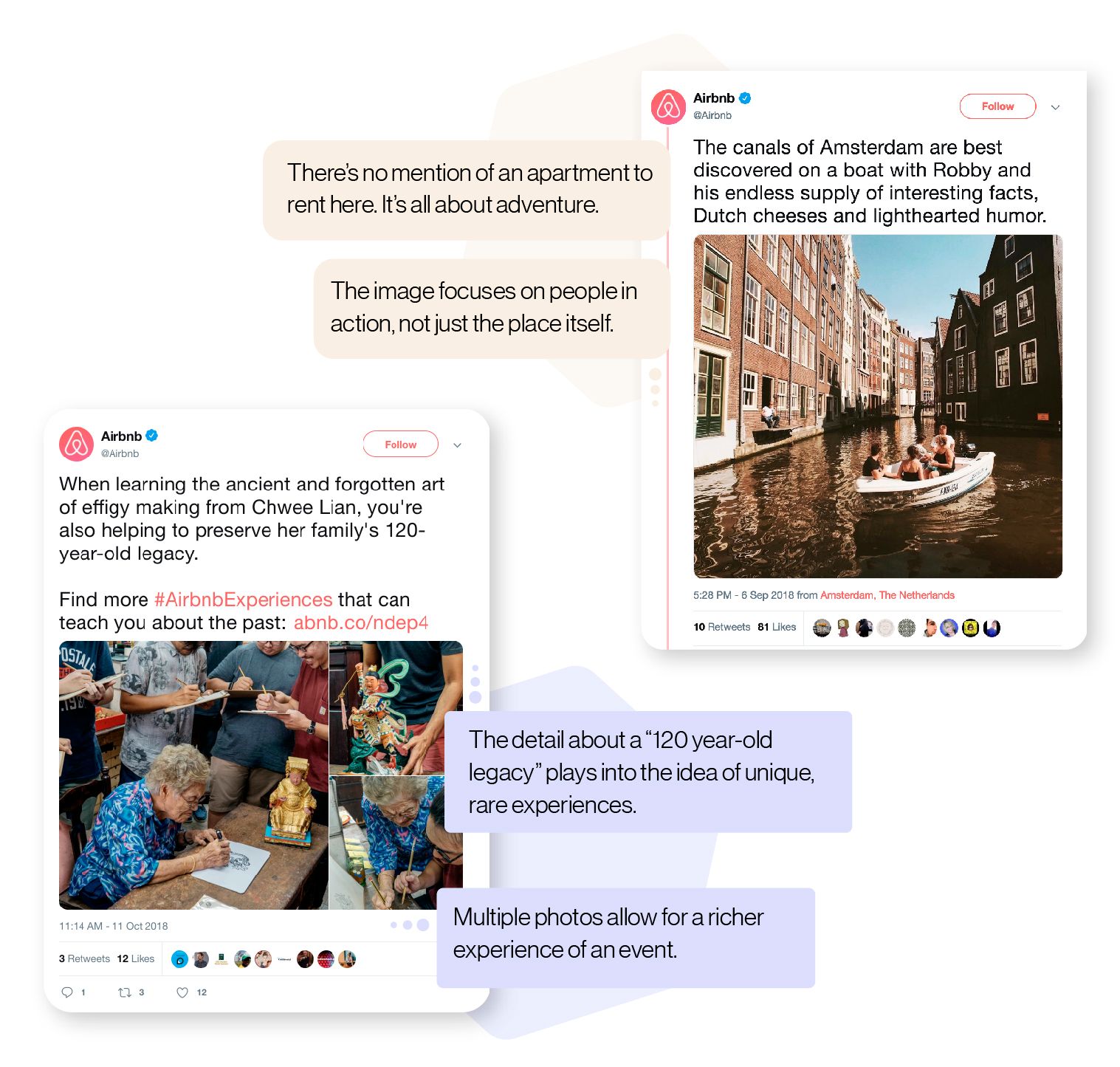
Social media for schools:
1: Repeatedly share small, personal stories that relate to a larger narrative about what makes your school special.
2: Keep sharing new content with the same core message.
3: Use action images as a storytelling tool.
2. Repeat yourself again and again
Nike uses their tagline, #justdoit, in post after post to drive home their branding. Companies in the private sector understand that getting your message across means repeating yourself again and again.
Each post is an opportunity to paint the company’s vision. Nike attaches the same messaging, #justdoit, to inspiring athletes’ stories, keeping their content fresh while maintaining their brand. Depending on the sports season, Nike shares updates about different athletes’ games and races as they correspond with the company’s messaging. Nike crafts posts that are meant to inspire, which fits into their branding narrative. The company inspires athletes to dream big, then provides them with the technology to meet those goals.
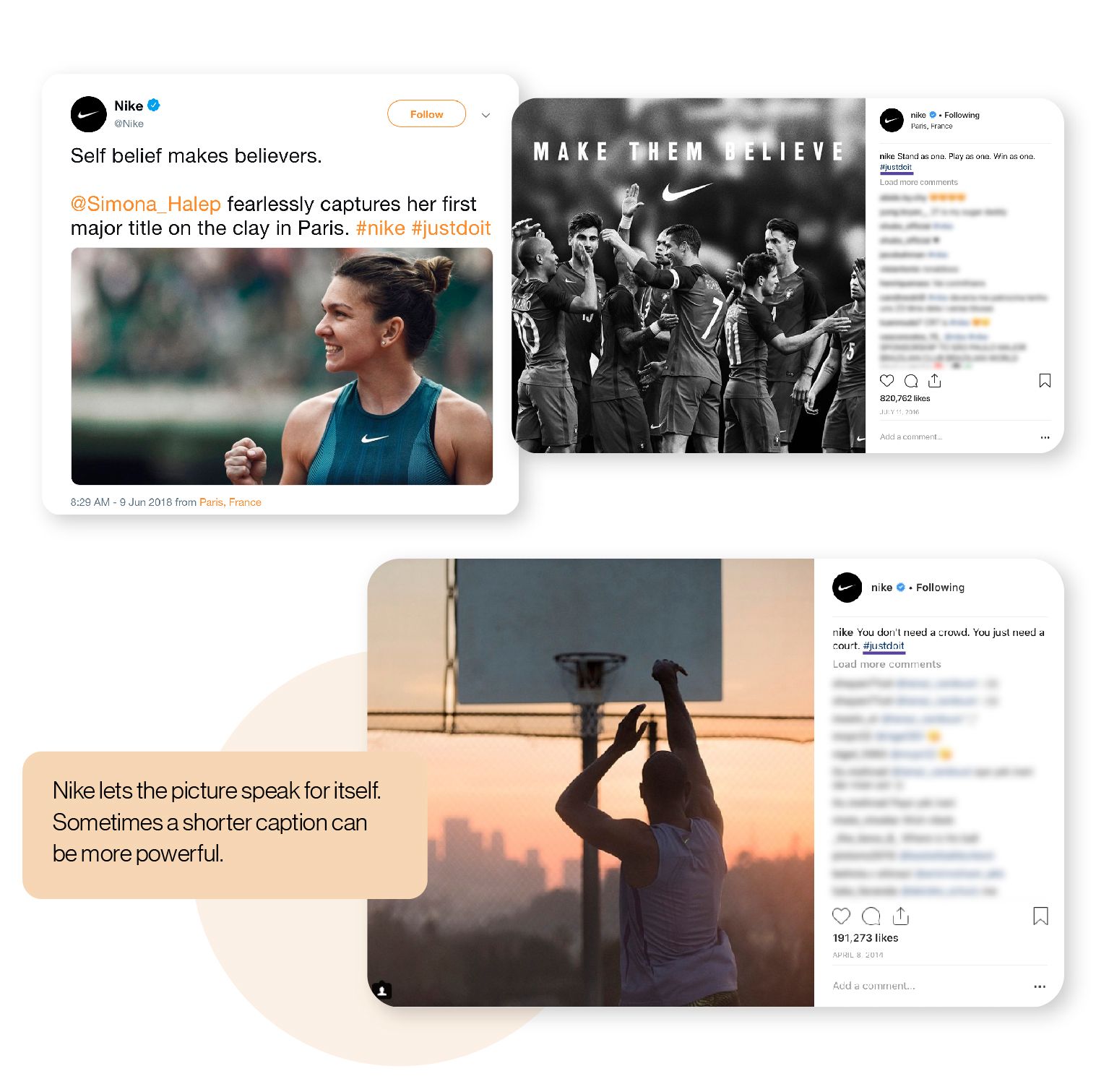
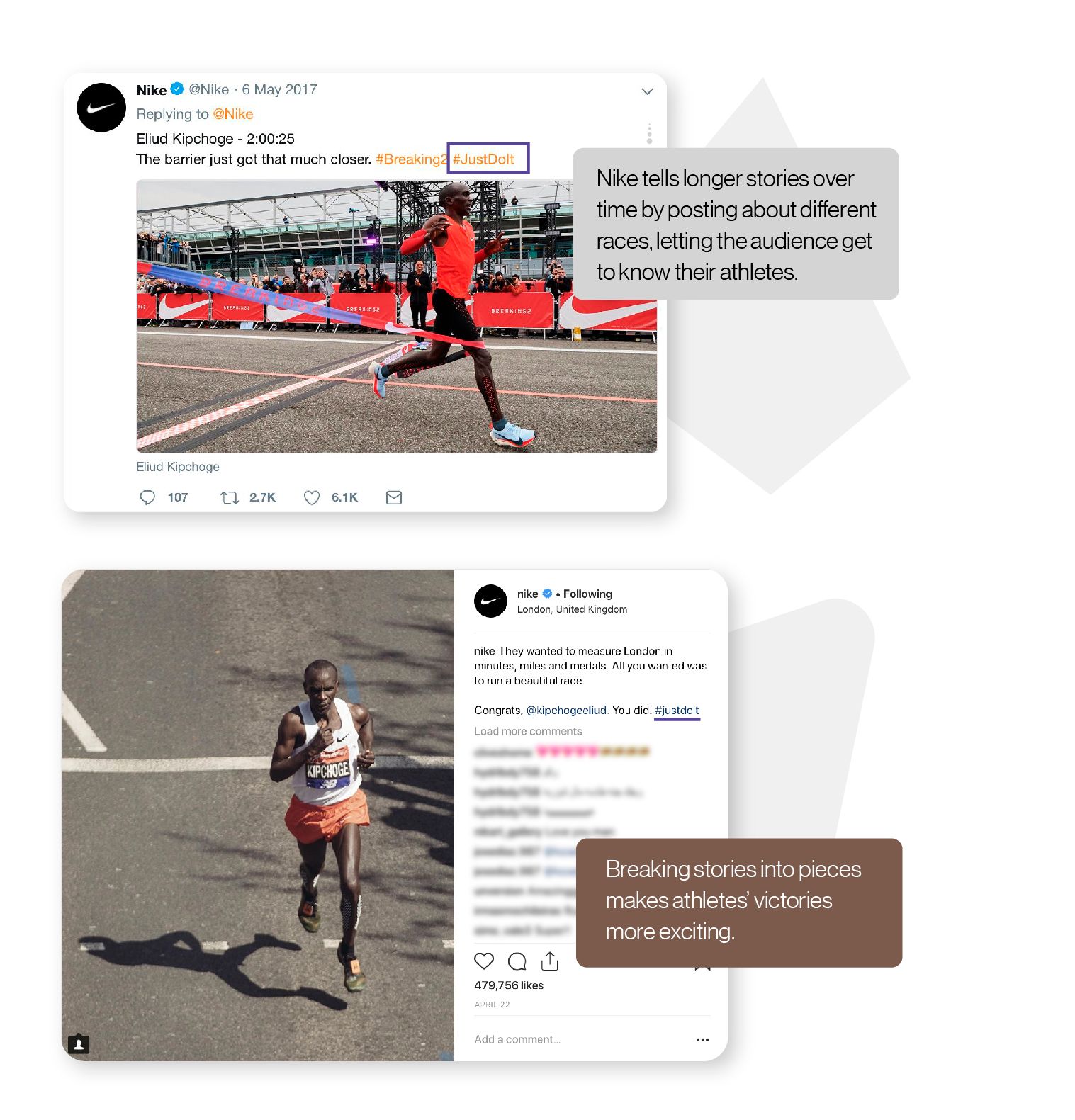
Social media for schools:
1: Only a fraction of your audience will see each post, so repeat yourself to spread the message to every user.
2: Continually link each social media post to the school's vision; Nike accomplishes this goal with #justdoit.
3: Just as Nike shares stories about different sports, post student stories from a diversity of interests, relating those stories back to your school's values.
3. Spotlight staff
Google frequently shares thought pieces from executive staff members. Each post focuses on something the “Googler” specializes in, allowing the staffer to put their best foot forward on social platforms. In turn, the company gains credibility in association with the staff member's knowledge. Oftentimes their posts will be shared across social platforms, even contributing to larger conversations on the topic. Allowing employees to share their expertise is a small way to highlight their excellence, improving employee engagement.
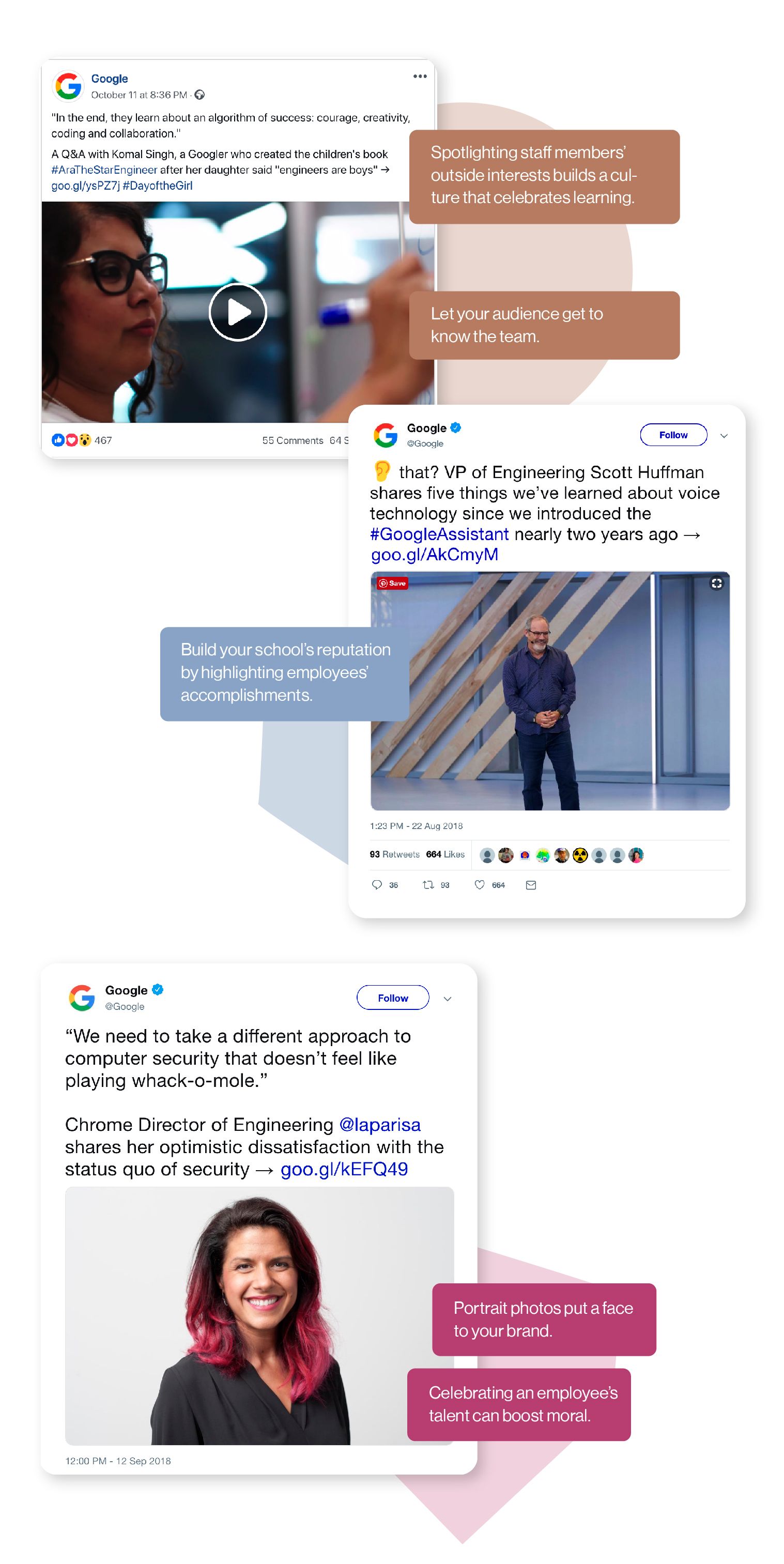
Social media for schools:
1: Get to know your teams’ passions and interests, or identify elements of their classroom that are truly exceptional.
2: Give your team a platform to share their expertise, like creating a schedule for Facebook posts.
3: Include a headshot that highlights their personality, putting a face to their name.
4. Redirect to a private channel
To avoid a messy argument, most companies publicly provide users with the option to address the issue on a private platform. Apple is a great example; they generally request that customers send them a direct message on Twitter; it’s one of their most consistent customer service tactics.
While this works well for large companies, a superintendent that we spoke to in Illinois emphasized the importance of getting people into your office. People are willing to say all kinds of horrible things online that they would not mention in person. Speaking face-to-face can de-escalate the situation by humanizing both parties.
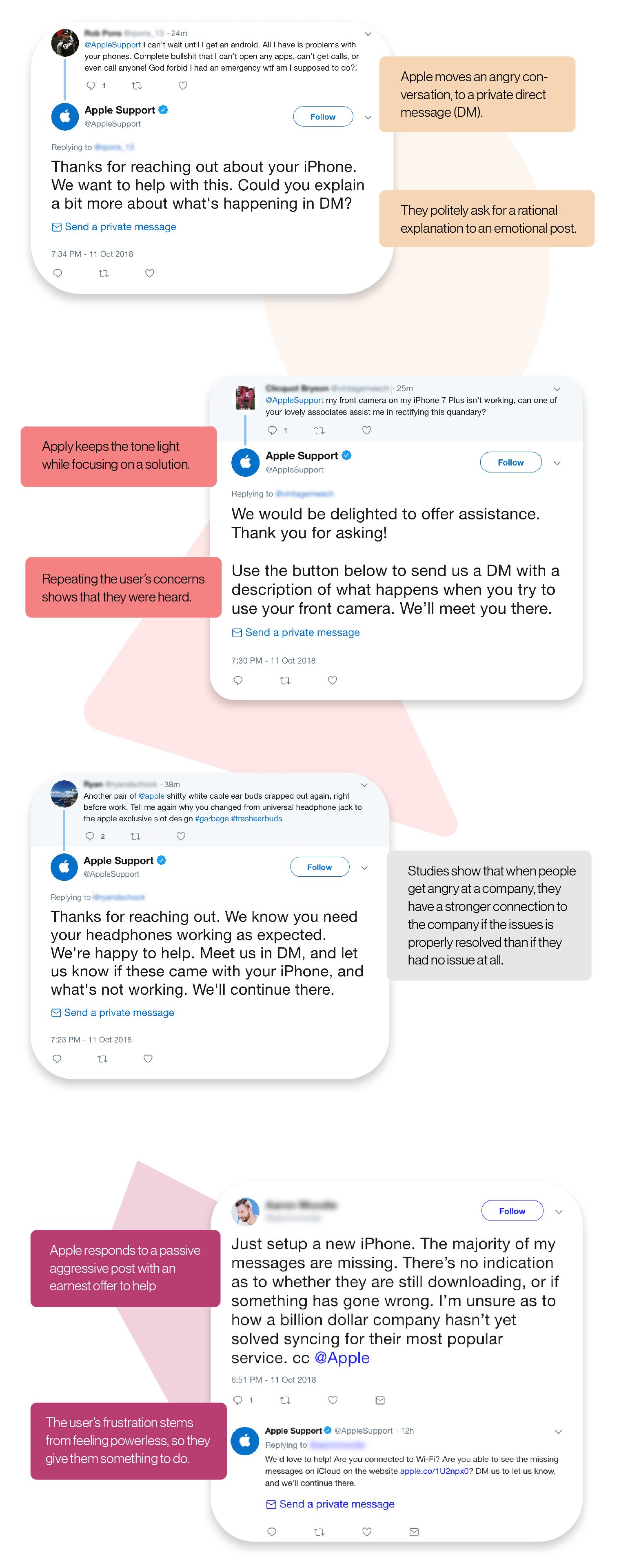
Social media for schools:
1: Avoid addressing the user’s issue in the comment field or in public messages.
2: Provide users with all of the information they need to move the conversation into a private forum.
3: Get them on the phone or in your office to address concerns.
5. Respond quickly with empathy
When users become upset on social media, it’s easy for them to forget that they’re interacting with human beings instead of a computer screen. Because of this phenomenon, anonymous users are somewhat dehumanized. Responding to a concern with empathy, however, shows the customer that you care. A word of understanding can stifle frustration in understanding customers.
Spotify is known for their online customer service; the company doesn’t even own a call line to address customers’ complaints. Instead, they address concerns with SpotifyCares. SpotifyCares is a model public relations page. The group consistently takes the time to listen to their customers, addressing issues from the customer’s perspective in order to find the most thoughtful course of action.
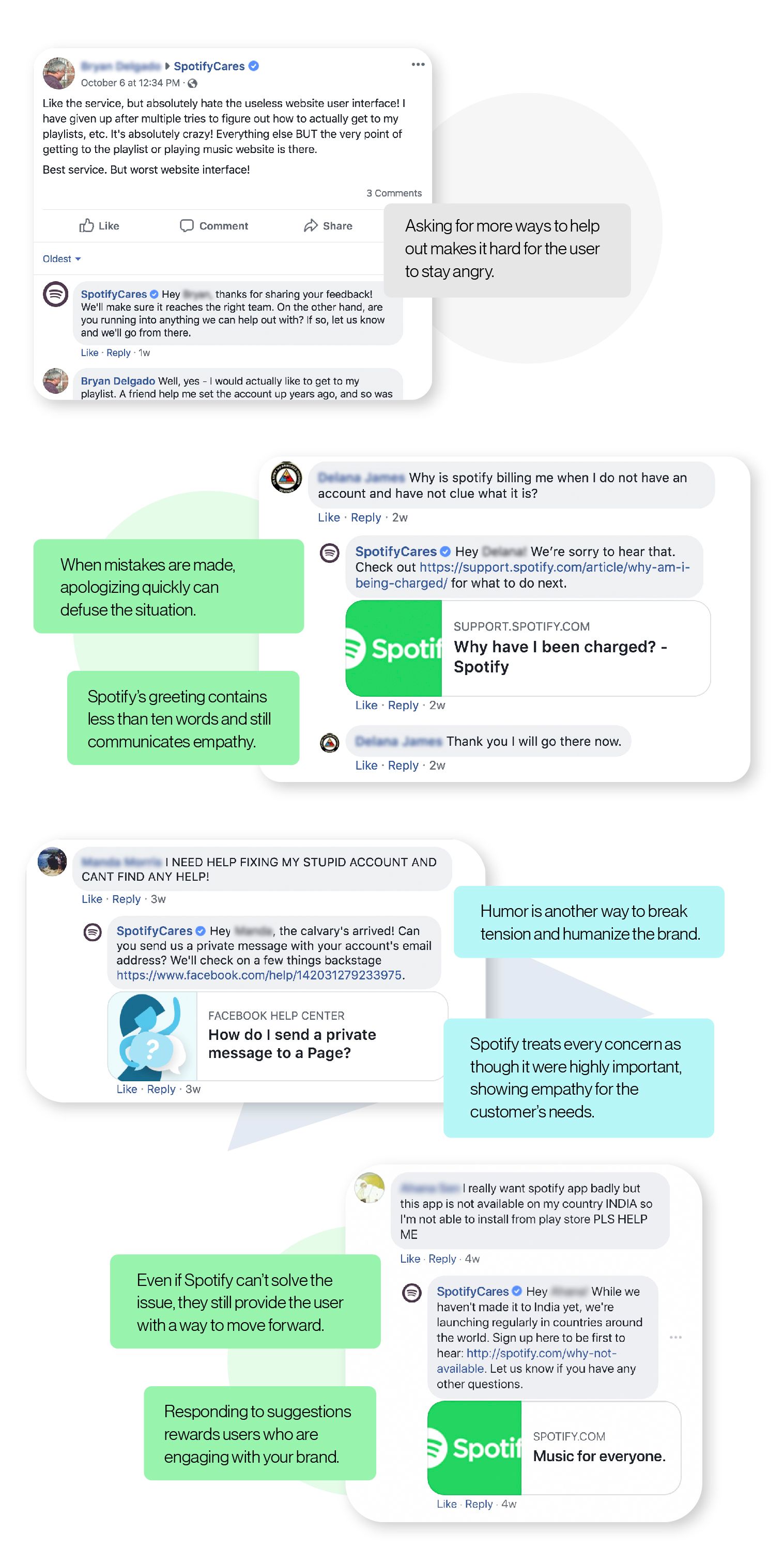
Social media for schools:
1: Respond quickly and politely to respectful concerns.
2: Show empathy to users’ complaints.
3: Emphasize that you care about helping them.
6. Know when to hide, block, or report
Facebook, Instagram, and Twitter all give page administrators the power to manage malicious or dishonest comments on posts. When people see your page, they can also see the comments on every post, so tactically using these techniques will improve your brand image. Marketers in the private sector are quick to remove posts that are not constructive to the conversation.
Be advised that overusing these tools can make it seem like you are censoring your audience. We recommend only using them only when someone is intentionally malicious or dishonest. Responding to respectful criticism lets your audience see answers to questions they may have for themselves, similar to the way that Spotify responds to their customers’ concerns.
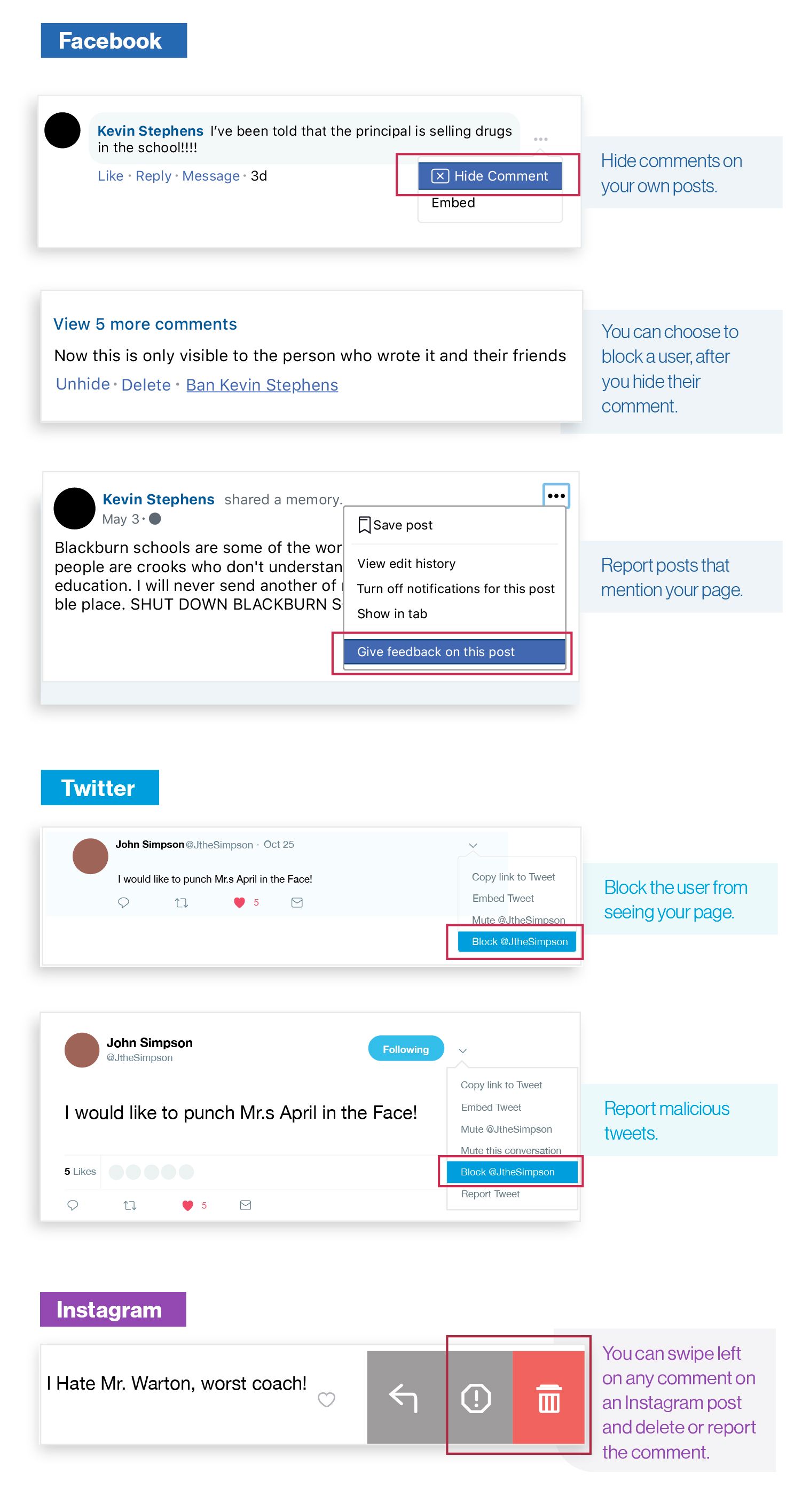
User guidelines:
Given the news about widespread abuse on social networks, each platform has released a detailed user guide on what types of posts are not allowed. Anyone running a school social media page should read through these guidelines:
Facebook: https://www.facebook.com/policies
Twitter: https://help.twitter.com/en/rules-and-policies/twitter-rules
Instagram: https://help.instagram.com/477434105621119/

SchoolCEO is free for K-12 school leaders. Subscribe below to stay connected with us!

